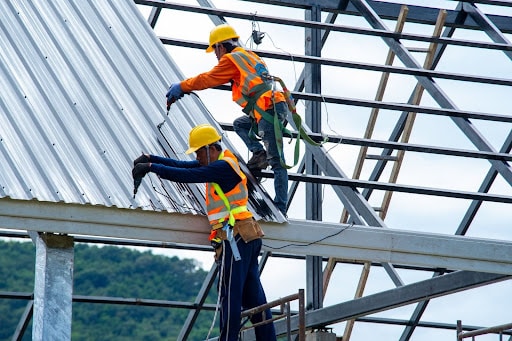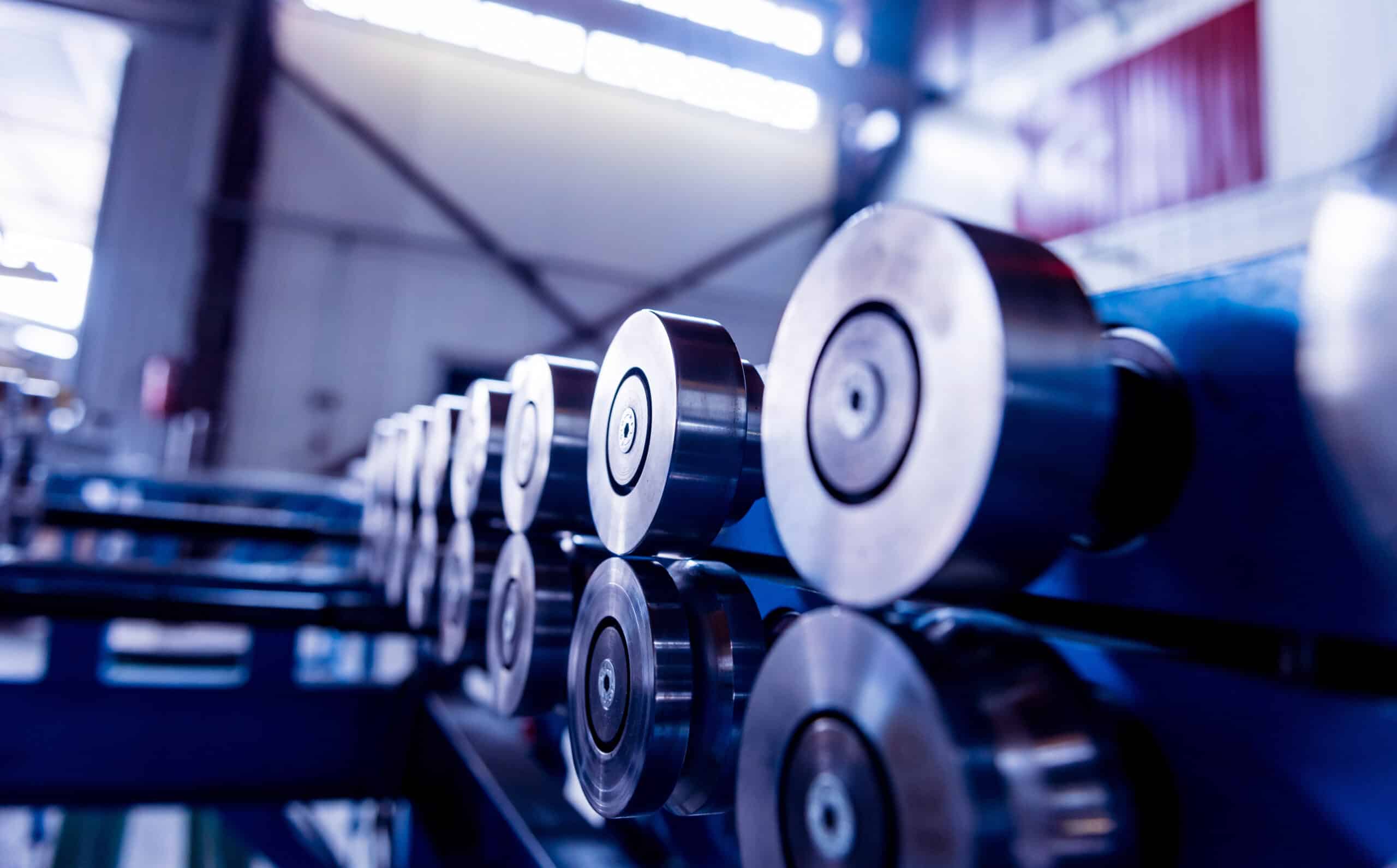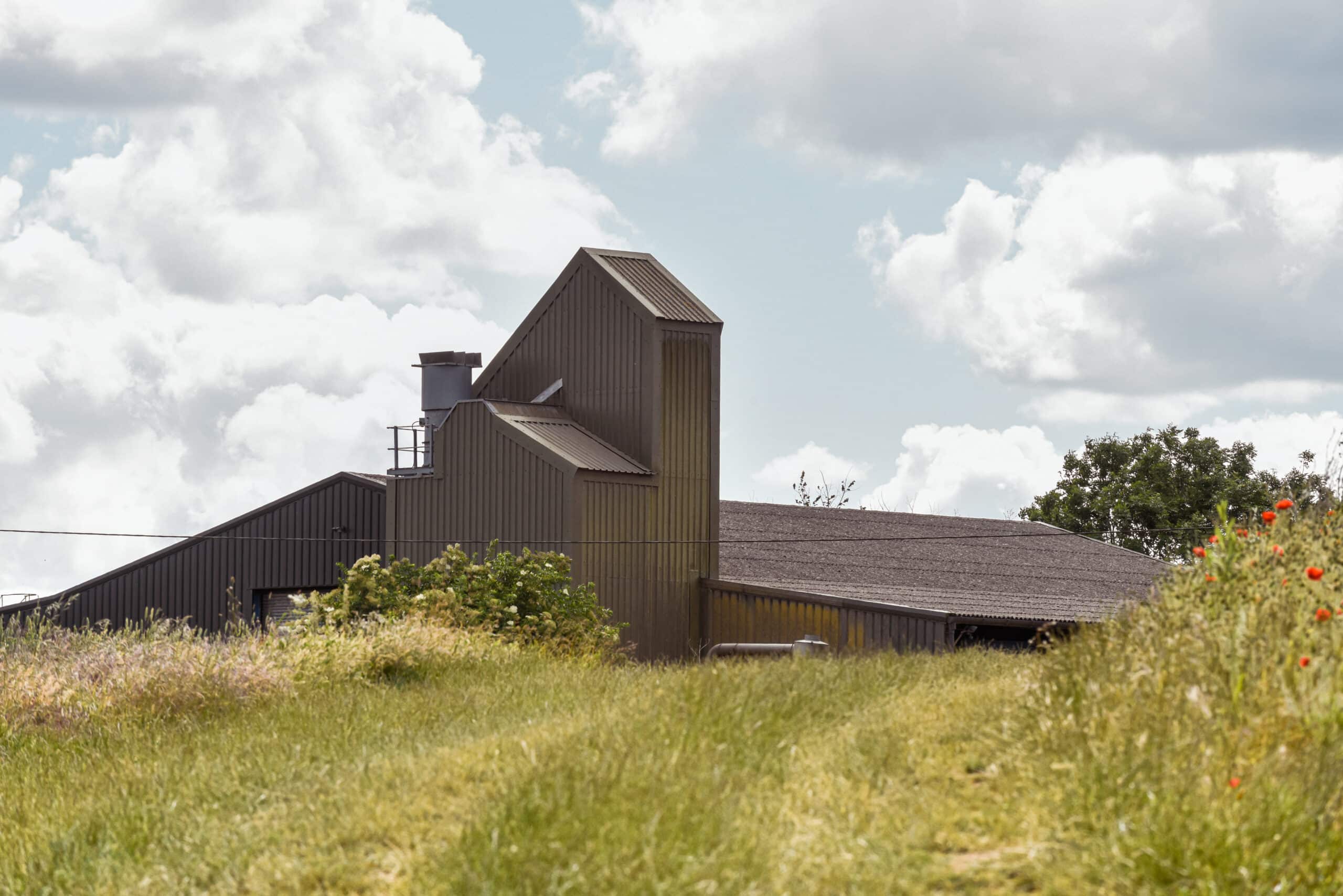Steel and concrete go head-to-head as the two most popular methods used in the building industry, each with its own advantages. Some factors that can help determine which material to use include:
- Location of the building
- The purpose of the structure
- Whether you prefer upfront or long-term savings
Steel is an alloy consisting mainly of iron and carbon; adding chromium and nickel creates stainless steel. Concrete is created by mixing a binding mass, either cement or lime, with fine or coarse aggregates, like stone, gravel, or sand, with water.
Let’s explore the key factors to consider when deciding between concrete and metal construction.
Round 1: Strength
Strength comes in different shapes, sizes, and materials!
Material strength can be measured in compressive and tensile strength. Compressive strength describes how much pressure a material can withstand (or compression). Tensile strength is the opposite—how well a material withstands pulling (or tension).
Steel possesses high tensile and compressive strength, making it suitable for structures that require flexibility and resistance to deformation. Metal structures can efficiently distribute loads, providing strength without extensive reinforcement. While steel is significantly heavier than concrete, steel has a much higher strength-to-weight ratio.
Concrete is known for its high compressive strength but low tensile strength; it can withstand heavy loads and is used in structures where strength is critical. However, concrete may crack under tension, so additional reinforcements like steel bars (rebar) are needed to enhance its tensile strength.
Round 2: Fire and Extreme Weather
Which material will still stand after taking on earthquakes, hurricanes, and fires?
Ductility refers to the ability of a material to undergo large plastic deformations. Concrete buildings have low ductility and, therefore, absorb very little energy. This makes them especially vulnerable to earthquakes. Buildings made from structural steel, however, offer the highest ductility. The high ductility of steel buildings allows them to bend considerably without breaking.
While no building material is completely fireproof, concrete and steel are non-combustible. Steel’s advantage over concrete is that a steel framework allows lightning charges to safely dissipate into the ground, minimizing the danger of fire and personal injury.
Both concrete and metal construction can withstand hurricane-force winds and are popular materials in hurricane country. The issue with concrete is when water seeps in, it becomes brittle and can crack over time.
Can’t we all just get along? Yes! A former Florida fire chief constructed his home utilizing steel and sprayed-on concrete to create a structure that can withstand winds up to 250 mph from category 5 hurricanes and hold up to the brute force of a 9.1 Richter Scale earthquake. Win-win!
Round 3: Affordability
We’re all eyes to see if metal construction beats concrete to the punch!
The cost of making a material, construction labor, and long-term costs all factor into affordability. The cost of concrete can vary depending on location, labor, and material prices. Initial construction costs for concrete may be lower than metal, but additional expenses for reinforcing materials and labor impact the affordability.
Steel construction cost is minimized by faster, easier installation, only 2% material waste, and reduced delivery costs. While metal construction materials like steel may have higher upfront costs, the speed of construction and durability can contribute to overall cost savings.
Round 4: Sustainability
Will metal construction or concrete finally throw in the towel during the vital sustainability round?
Steel is 100% recyclable and about 74% more energy-efficient than producing virgin steel. The demand for recycled steel far exceeds supply, making it a highly valuable and cost-effective material. Additionally, the lighter weight of metal structures can lead to lower transportation costs and reduced energy consumption during construction.
Concrete production is energy-intensive and contributes to carbon emissions. However, its durability and longevity can offset some of its environmental impact over the long term. Additionally, advancements in eco-friendly concrete mixes aim to reduce the carbon footprint of concrete construction.
Round 5: Versatility
Versatility is necessary in the ring; without it, a T.K.O. will surely take one of these materials down!
Concrete is a versatile material that can be molded into various shapes and sizes. It is often used in projects requiring intricate designs or specific architectural elements. Unfortunately, extremely wide spans using concrete are difficult to impossible.
Steel structures are known for their versatility and adaptability. With the highest strength-to-weight ratio of any building product, steel has longer span capabilities, wider on-center-spacing possibilities, and reduced foundation requirements. Steel construction is particularly suitable for projects that demand large, open areas.
While we’re not saying that concrete construction is on the ropes, we do see how well metal construction can roll with the punches!
International Steel Framing for the Win
Ready to get building? At International Steel Framing, we partner with you from initial design through completed cold formed steel construction! Our ISF Product Suite offers an integrated system of software, steel frame roll formers, and services to fulfill all your cold formed steel framing requirements for commercial and residential construction.
We would love to learn more about your business and discuss how International Steel Framing has what you need to succeed in the cold-formed steel industry.
If you would like to learn more about manufacturing using Performance 1 Roll Former, click here.



